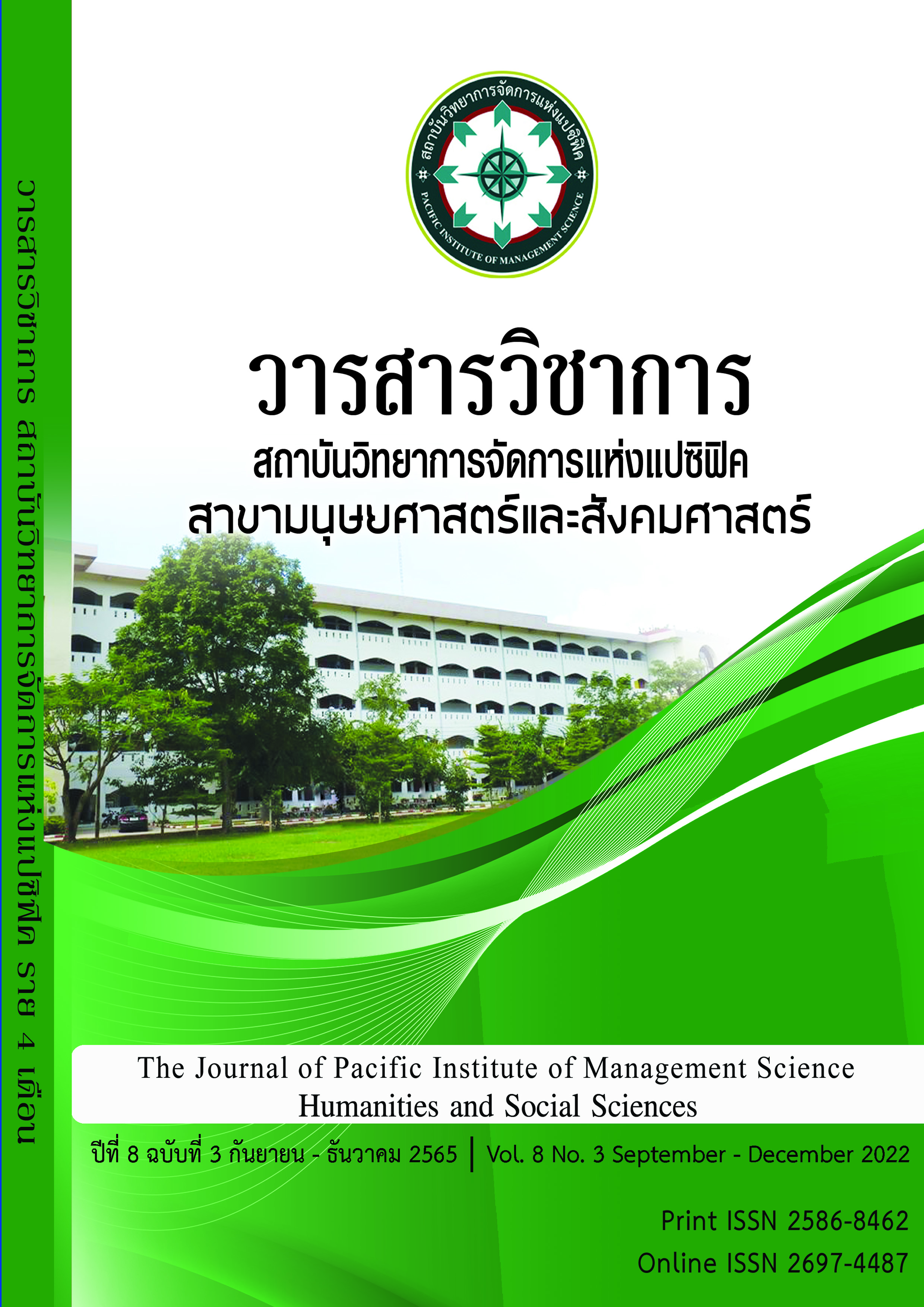A Development of Japanses Vocabulary Memorization Skills by Using Mnemonic Technique Image as Media Model of the Secondary Year 4 Students, Dechapattanayanukul School
Keywords:
Japanese vocabulary, Mnemonic technique, Image as Media, Dechapattanayanukun SchoolAbstract
The objectives of this research were: 1) To study the results of development of memorizing Japanese vocabulary by using a picture mnemonic technique image as media model of the secondary year 4 students, Dechapatanayanukul School. 2) To study the retention of memorizing Japanese Vocabulary by using a picture mnemonic technique of Mathayomsuksa 4 students in Dechapatanayanukul School, and 3) To study students' attitudes towards using the Japanese Vocabulary Memorized Exercise of Mathayomsuksa 4 students in Dechapatanayanukul School. It is a quasi-experimental research. The population is 8 students in Grade 4/9 who choose to study Japanese language courses. The tools used include 1) Japanese vocabulary skills exercise 2) Learning management plan 3) Test and 4) Attitude questionnaire. The statistics used were percentage, mean, and standard deviation.
The results showed that
1) The results of improving skills in memorizing Japanese vocabulary by using picture-mediated mnemonic techniques of Mathayomsuksa 4 students at Dechapatanayanukul School Achievement was 81.87 percent, higher than 70 percent. 2) Memory persistence of Mathayomsuksa 4 students at Dechapatanayanukul School After using the practice of memorizing Japanese vocabulary skills Achieved 66.25 percent higher than the specified by 60 percent, 3) Attitudes of Mathayom Suksa 4 students at Dechapatton School Yanukul towards the practice of memorizing Japanese vocabulary skills by using image-mediated mnemonic techniques Overall, it's at a good level.
References
กระทรวงศึกษาธิการ. (2553). การศึกษา: การสร้างประชาคมอาเซียน 2558. กรุงเทพฯ: สำนักความสัมพันธ์ต่างประเทศ สำนักงานปลัดกระทรวงศึกษาธิการ กลุ่มประชาสัมพันธ์ สำนักงานรัฐมนตรี กระทรวงศึกษาธิการ.
ธีร์วรา ปลาตะเพียนทอง และภัทร์ธีรา เทียนเพิ่มพูน. (2563). การพัฒนาผลสัมฤทธิ์การเรียนรู้ด้าน คำศัพท์และความคงทน โดยใช้เทคนิคช่วยจำร่วมกับสมุดภาพคำศัพท์สำหรับนักเรียนชั้น ประถมศึกษาปีที่ 6 โรงเรียนอนุบาลนครปฐม. (การค้นคว้าอิสระ). กรุงเทพฯ: มหาวิทยาลัยศิลปากร.
บุญชม ศรีสะอาด. (2542). วิธีการทางสถิติสำหรับการวิจัย. พิมพ์ครั้งที่ 2. กรุงเทพฯ: สุวีริยาสาส์น.
ปิยภาณี หนูนุ่น และคุณัชญ์ สมชนะกิจ. (2563). การพัฒนาทักษะการจำคำศัพท์ฮิระงะนะโดยใช้ชุดพัฒนาคำศัพท์สำหรับนักเรียนแผนการ เรียนศิลป์ภาษาญี่ปุ่น ชั้นมัธยมศึกษาปีที่ 4 โรงเรียนวรนารีเฉลิม จังหวัดสงขลา.
วารสารการประชุมหาดใหญ่วิชาการระดับชาติและนานาชาติ, 12, 1119-1130. chrome-extension://oemmndcbldboiebfnladdacbdfmadadm/https://www.hu.ac.th/conference/conference2021/Proceeding/doc/03%20ED/074-ED%20(P.1119%20-%201130).pdf
รังสิมา เสวี. (2547). ผลของการเรียนโดยใช้ภาพประกอบ 3 แบบที่มีต่อผลการเรียนและความคงทนในการจำศัพท์ภาษาอังกฤษของนักเรียนที่บกพร่องทางการได้ยิน ชั้นมัธยมศึกษาปีที่ 1.วิทยานิพนธ์ศึกษาศาสตรมหาบัณฑิต มหาวิทยาลัยเชียงใหม่.
สารนิช พละปัญญา. (2556). การใช้เทคนิคจิตภาพในการสอนตัวอักษรคันจิภาษาญี่ปุ่น. (วิทยานิพนธ์ ปริญญามหาบัณฑิต). เชียงใหม่: มหาวิทยาลัยเชียงใหม่.
Matsui, Yoshikazu. (1999). Japanese Teaching in Thailand. Japan: Kinsei-sha.
Downloads
Published
Issue
Section
License
Copyright (c) 2022 Pacific Institute of Management Science

This work is licensed under a Creative Commons Attribution-NonCommercial-NoDerivatives 4.0 International License.
บทความที่ได้รับการตีพิมพ์เป็นลิขสิทธิ์ของ สถาบันวิทยาการจัดการแห่งแปซิฟิค
ข้อความที่ปรากฏในบทความแต่ละเรื่องในวารสารวิชาการเล่มนี้เป็นความคิดเห็นส่วนตัวของผู้เขียนแต่ละท่านไม่เกี่ยวข้องกับสถาบันวิทยาการจัดการแห่งแปซิฟิค และคณาจารย์ท่านอื่นๆในสถาบันฯ แต่อย่างใด ความรับผิดชอบองค์ประกอบทั้งหมดของบทความแต่ละเรื่องเป็นของผู้เขียนแต่ละท่าน หากมีความผิดพลาดใดๆ ผู้เขียนแต่ละท่านจะรับผิดชอบบทความของตนเองแต่ผู้เดียว







